21 November 2011
Compton Peak columns
Posted by Callan Bentley
After finding out about the spectacular exposure of columnar-jointed Catoctin Formation exposed on Compton Peak in Shenandoah National Park, it didn’t take me too long to visit the outcrop in person. I headed out there on Saturday morning with my wife, and three former GMU structure students, all of whom have taken up the habit of geoblogging.
It was a sunny morning, and we found our way to the outcrop without too much trouble. Here’s a composite image showing Joe and Alan with the columns:
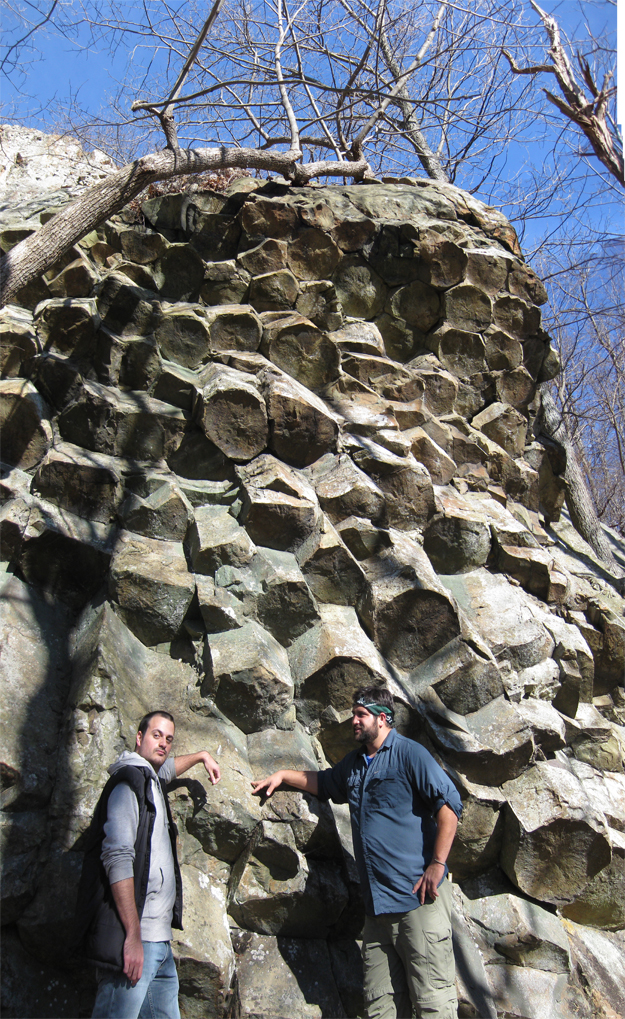
Looks like an album cover, eh? …
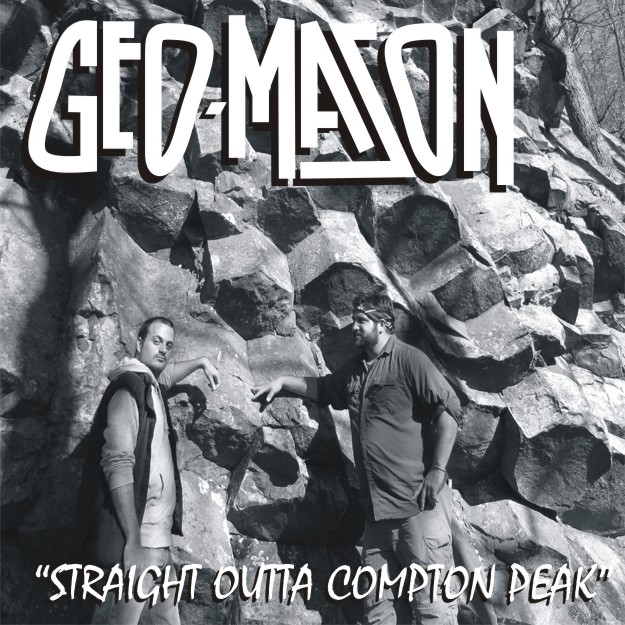
The guys were talking about re-enacting the cover of Led Zeppelin’s Houses of the Holy (but upside-down), and I’m grateful there was a lady present, so that never transpired. [BTW: I owe a tip of the hat to Aaron, who was the first one to make the Compton joke.]
Okay, all joking aside, check out this gorgeous exposure:
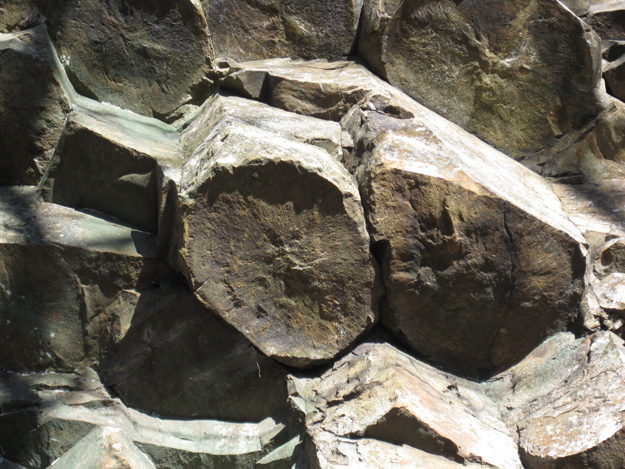

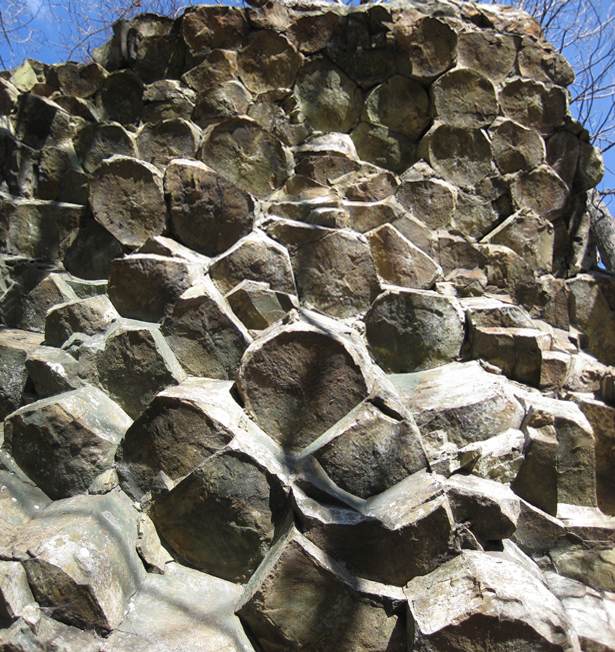
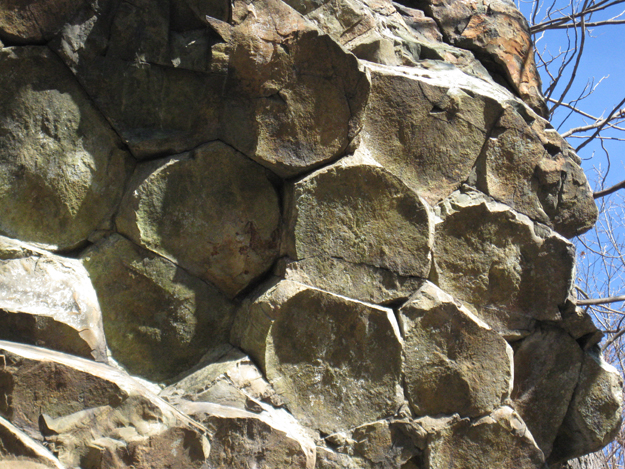

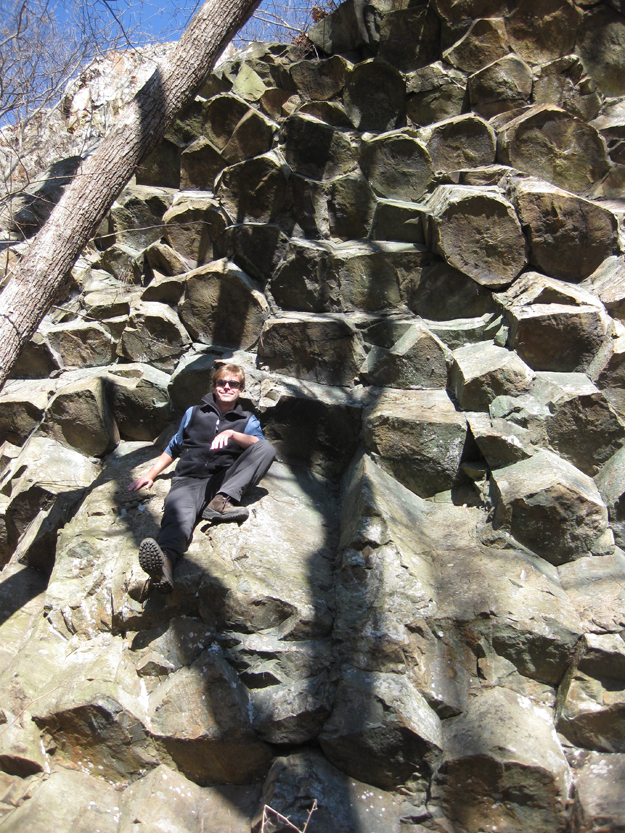
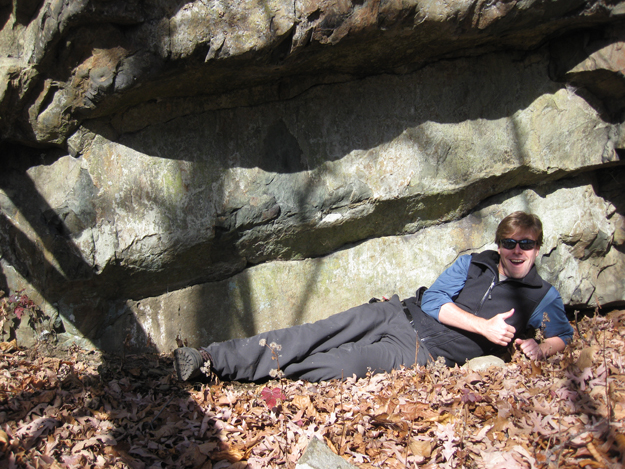
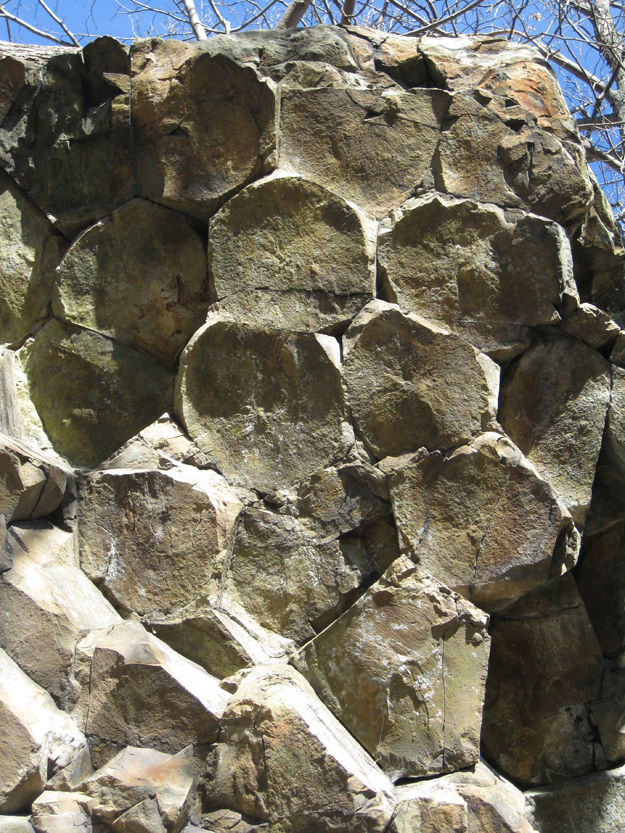

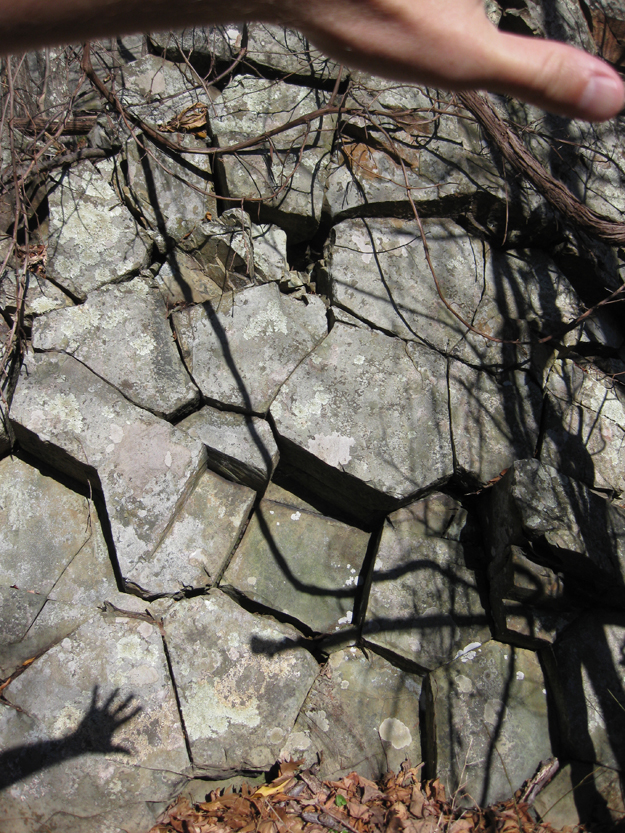
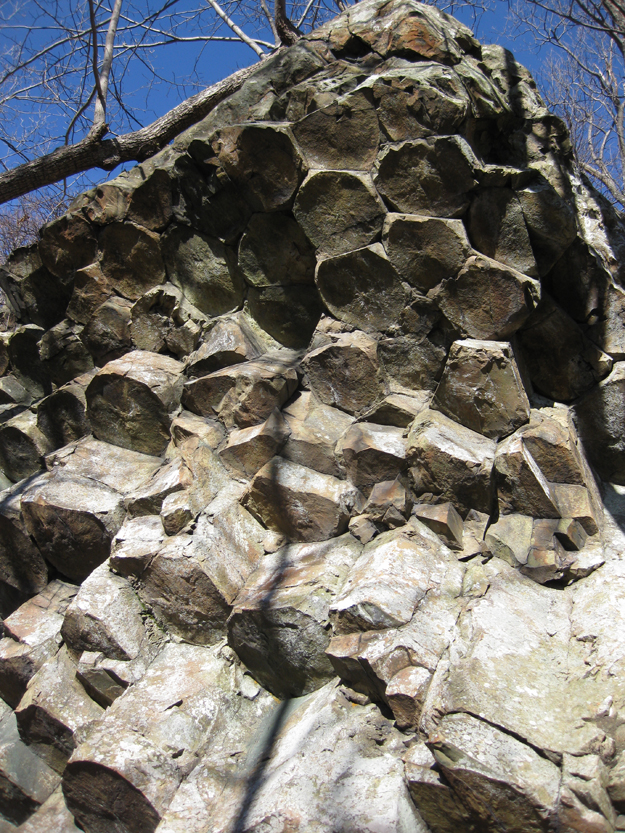
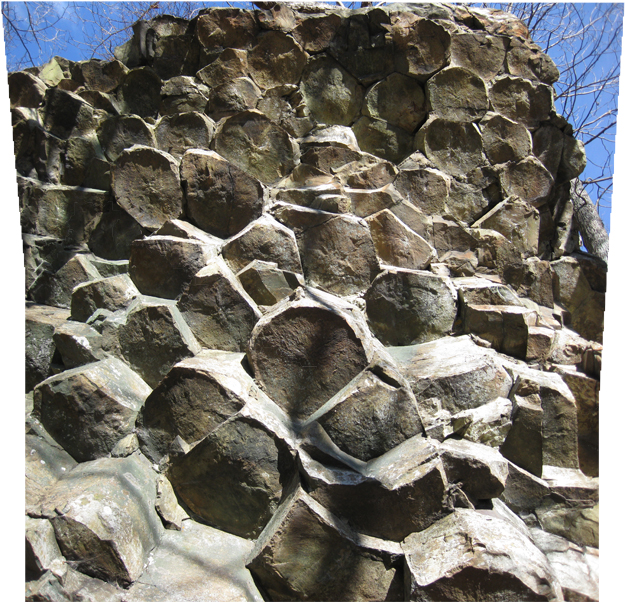
One thing we noticed is that the columns, though originally hexagonal (or at least polygonal) in cross-section, were weathering towards increasingly cylindrical shapes with rounded, nubby tips. Overall, this is a well-documented phenomenon called “spheroidal weathering,” but it’s particularly striking when it goes to work on a form that is already geometrically striking. Check it out:
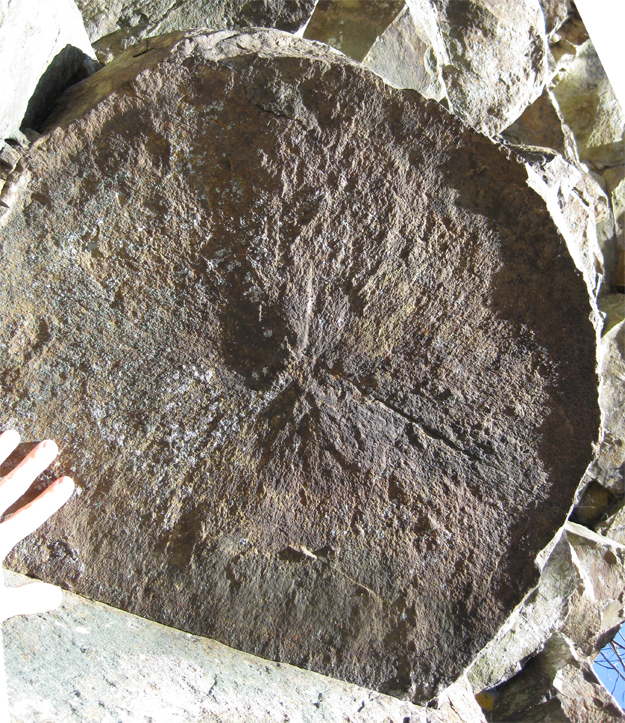
From the sides, these “transverse joints” (~orthogonal to the linear trend of the column) appear to make nice right angles with the sides of the column:
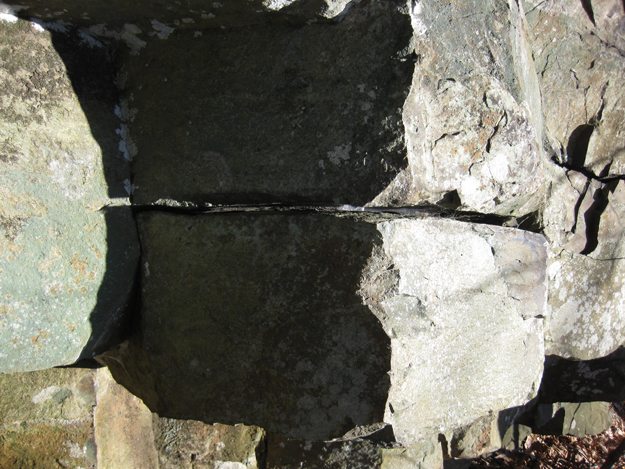
However, there are places where they don’t. Instead they have slightly convex or concave surfaces, just like the columns at the Giant’s Causeway in Northern Ireland (site of the Led Zepellin cover). Not only that, but the crisp corners don’t last long, and soon they are rounded off, like this one:
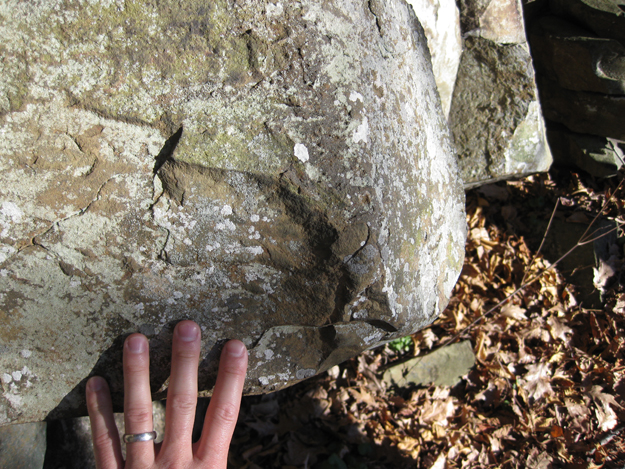
In this next shot, Alan points to a very concave fracture that has highly-inflected edges that are tangential to the main, ~planar fracture:
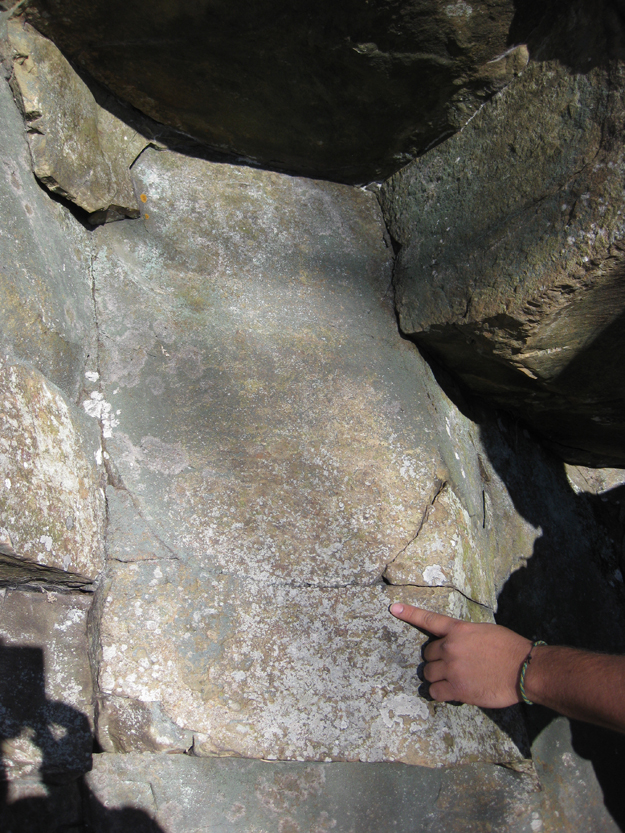
If you look closely, you can see an identical situation a short distance further up the column by about 12 inches. Here, let me annotate it for you:
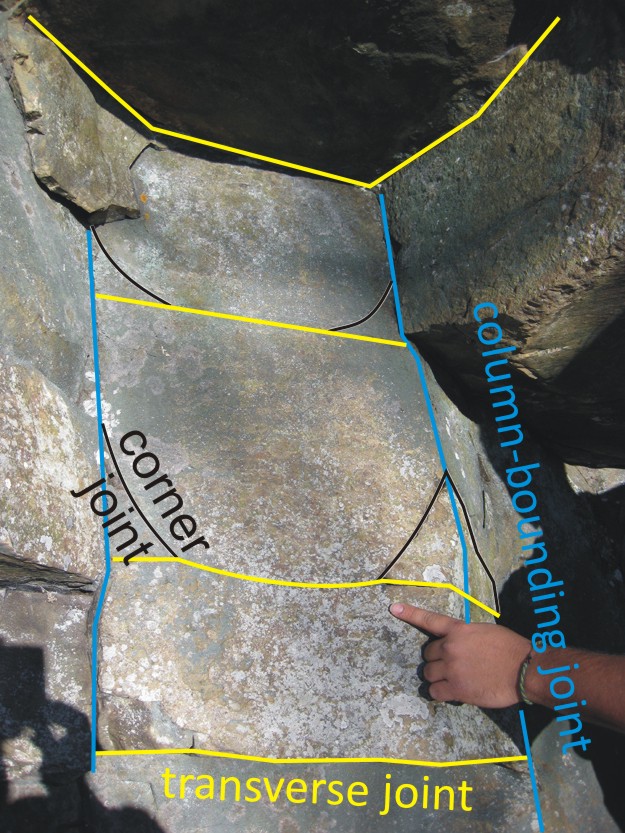
When these weather out in 3D, you get a very bulbous end to the column:
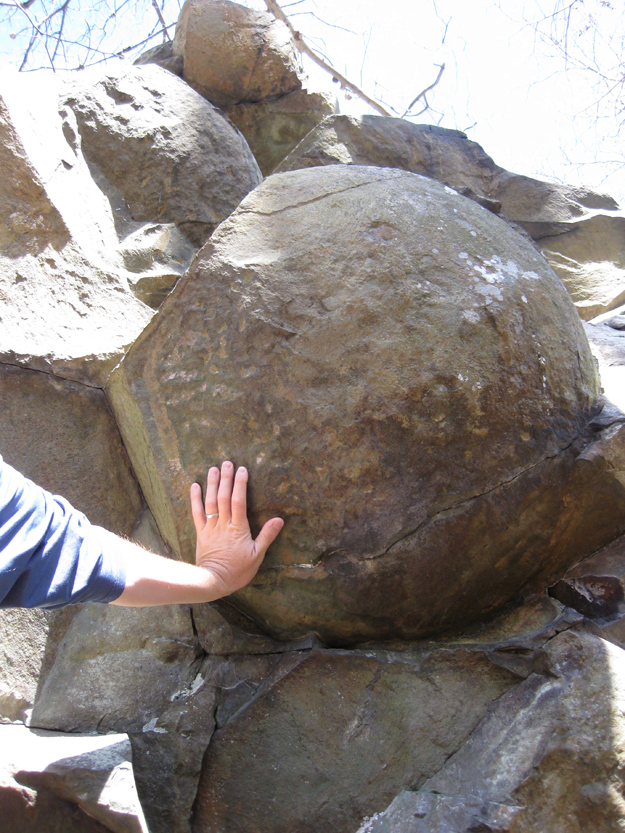
What we found interesting here was that all these curved “corner joints” were in the same position, concave-up. In other words, they were all “smiley face” in their orientation, and we didn’t observe any “frowny face” oriented corner joints. I’m not sure why that should be, if this were simply a case of spheroidal weathering.
Wild stuff. Awesome weather, entertaining company, and great structures. I began to plot having my next class of GMU structural geology students compare the strain on these columns to the sheared-out ones that I always visit on the Limberlost Trail.
Explore the scene for yourself with this GigaPan that Alan went back and shot a week or so later:
Finally, we trekked to the actual summit of Compton Peak, and over to the other side of the mountain, and got this view to the north and northwest (Click on it to make it bigger):
An annotated view, showing key landscape features in this vista across the western Blue Ridge and into the eastern Valley & Ridge:
What a great scene. I love the mountains around here.




 Callan Bentley is Associate Professor of Geology at Piedmont Virginia Community College in Charlottesville, Virginia. He is a Fellow of the Geological Society of America. For his work on this blog, the National Association of Geoscience Teachers recognized him with the James Shea Award. He has also won the Outstanding Faculty Award from the State Council on Higher Education in Virginia, and the Biggs Award for Excellence in Geoscience Teaching from the Geoscience Education Division of the Geological Society of America. In previous years, Callan served as a contributing editor at EARTH magazine, President of the Geological Society of Washington and President the Geo2YC division of NAGT.
Callan Bentley is Associate Professor of Geology at Piedmont Virginia Community College in Charlottesville, Virginia. He is a Fellow of the Geological Society of America. For his work on this blog, the National Association of Geoscience Teachers recognized him with the James Shea Award. He has also won the Outstanding Faculty Award from the State Council on Higher Education in Virginia, and the Biggs Award for Excellence in Geoscience Teaching from the Geoscience Education Division of the Geological Society of America. In previous years, Callan served as a contributing editor at EARTH magazine, President of the Geological Society of Washington and President the Geo2YC division of NAGT.
[…] I am in quite the musical mood today since I was just recently included on a new album cover. […]
[…] our way up Compton Peak the other day, my field crew spotted some fibrous growths of ice growing up and out (perpendicular to the surface […]
Here’s a gigapan look at the Compton Peak outcrop:
http://www.gigapan.org/gigapans/97851
Great stuff Calan. Is it possible to get the coordinates so I can visit the outcrop?
It’s here:
https://www.google.com/maps/@38.8177076,-78.1755961,16.31z/data=!5m1!1e4
Park at the Compton Gap parking area at north end of map view, then hike uphill (south) on the AT. At the top, there will be a trail intersection. Right (west) goes to the summit of Compton Peak and an overlook, but left (east, downhill) leads to the columns.
[…] just the right conditions, the rock will cool in the geometric patterns you see here. Read this and this if you’re interested in some of the science behind […]